
|
|
|
|
|
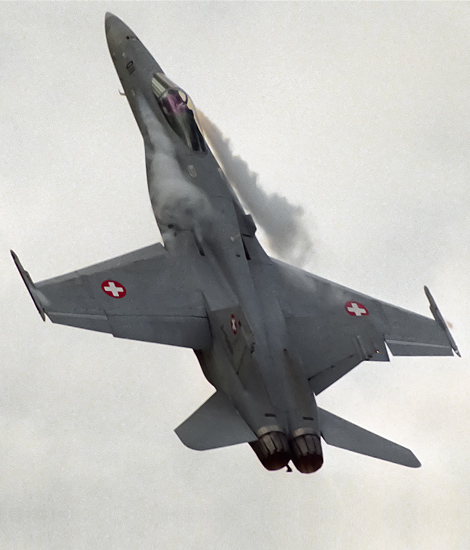
|
Luchtmacht Open Dagen 2004; Volkel, June 19, 2004
25 Years F-16 RNLAF, Part I; Text and Photograph’s by Alex van Noye
The Open House of the Royal Netherlands Air Force was on the program again on Friday, June 18, 2004 and Saturday,
June 19, 2004. The theme this year is 25 years F-16 in service of the Royal Netherlands Air Force. The F-16 was
purchased as a replacement for the Lockheed F-104G Starfighter at the end of the 70s.
The development of the F-16 began in 1965 with the Advanced Day Fighter (ADF) project. The requirement for the
lightweight fighter was that it was suitable for air to air battles at day time. This aircraft should be able to
operate alongside a heavier fighter from the FX project which would later be known as the F-15 Eagle. The FX project
was given a higher priority in the Western world in 1964. The reason for this was the performance of the MiG-25.
The ADF project was started at that moment under the name F-XX Lightweight Fighter Concept. The project was stopped
in 1969. The USAF and the US Navy were afraid to lose the expensive F-15 and F-14 programs due to the cheaper light
weight fighter. The idea for a light weight fighter was refunded on January 16, 1971, under the name Light Weight
Fighter (LWF) project. Again a set of requirements was made to specify an aircraft like this. Various aircraft
manufacturers could develop a prototype in the race for the contract (Competitive Contracting). The main requirement
was an aircraft which was small and agile, with a maximum weight of 9,000 kg. The aircraft had to be a concurrent
for the MiG-17 and the MiG-21 in air battles and it should reach at least Mach 1.6. The aircraft had to be suitable
for future updates with new technologies and weapon systems. A total of 5 companies were interested in the project,
namely; Boeing, General Dynamics, Vought, Lockheed and Northrop. After evaluating the various proposals in 1972,
it was decided to choose the models of General Dynamics and Northrop. The General Dynamics Model 401 was called the
YF-16 and the Northrop Model P-600 would be produced as YF-17.
The U.S. Defense Staff indicated that the LWF project would operate alongside the F-15 in 1974. On January 13, 1975,
the YF-16 was chosen as the winner of this program and the USAF ordered 15 preproduction models; this number was
later reduced to 8 aircraft. The YF-16 was chosen over the YF-17, because of its bigger operational range, better
controls and lower operating costs. Also an important fact was that the
|
|
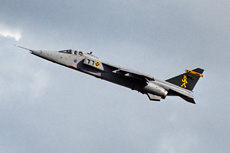
|
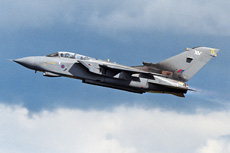
|
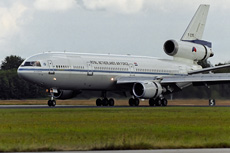
|
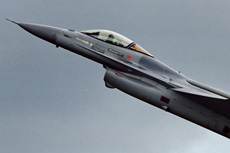
|
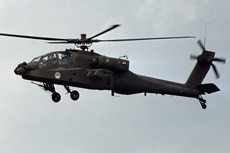
|
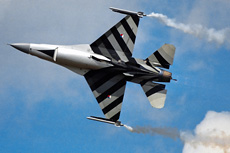
|
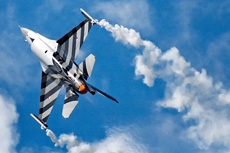
|
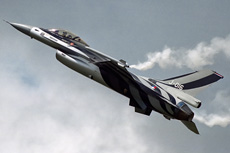
|
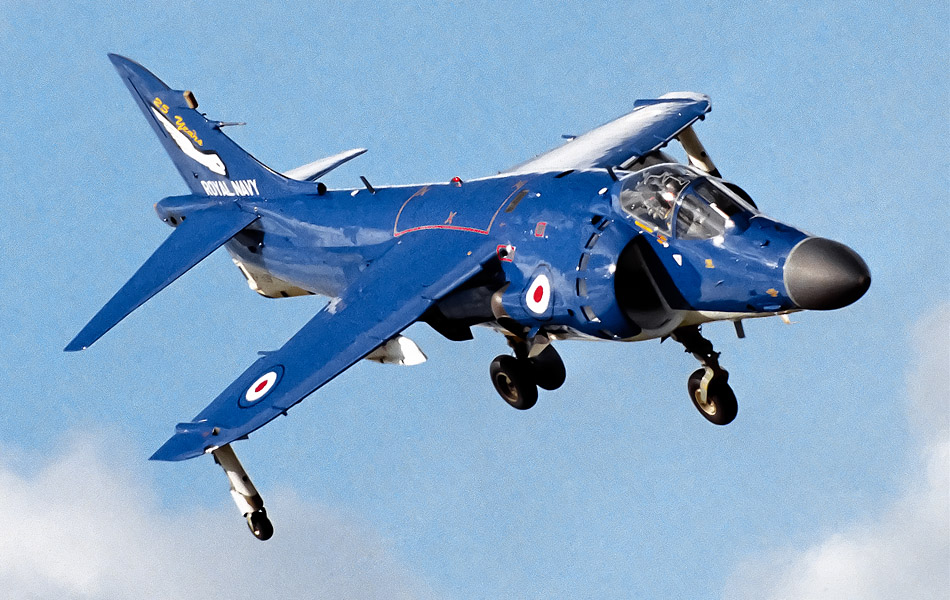
|
same engine of the F-15 was used for the F-16. The financial crisis of the General Dynamics Company was used as
a motivation to stimulate this project. The USAF initially ordered 650 F-16s. On May 2, 1975, the USN decided to
develop the YF-17 for landing on aircraft carriers. This project resulted in the development of the F/A-18 Hornet.
The F-16 was an aircraft which was its time far ahead. The F-16 was the first aircraft in the world which was
completely controlled by the fly-by-wire principle. The first production versions of the F-16 were an F-16A
(single seat) and an F-16B (two-seater for training) Block 1. These aircraft had a black nose and a smaller tail
compared with the later versions. The black nose was replaced by a gray nose from the Block 5 version, because
it was clearly visible in aerial combat. The changes of the Block 10 update were primarily internal. The first
major changes were implemented in the Block 15 variant. The F-16 Block 15 had larger horizontal tail surfaces and
wings and they were reinforced to carry air to air missiles with a bigger range than the AIM-9 Sidewinder.
Simultaneously, the improved F100-PW-220 engine was introduced.
The F-16 was quickly seen as a possible replacement of the F104 Starfighter in Europe. The F-16 was seen as the
ideal aircraft for fighting near the Iron Curtain. There was an initial group of 4 countries who became the first
export customers for the F-16. These countries, were; Belgium, Denmark, the Netherlands and Norway. These countries
were united in the European Participating Governments (EPG). This collaboration was started in Europe from 1975.
These 4 countries decided to purchase the F-16 in June 1975. The F-16 was chosen above the Dassault Mirage F1,
the Saab Viggen and the YF-17. The 4 NATO partners ordered 348 F-16s in total. The EPG countries started together
with the U.S. Government (USG) the Multinational Fighter Program (MNFP), whose main objective is to develop the
F-16 and work together whenever possible. The aircraft for the EPG partners were built in Belgium and the
Netherlands by respectively SABCA and Fokker. The USAF received its first F-16 on August 17, 1978. The first
European built F-16 for the Belgian Air Force was delivered on January 29, 1979. The Netherlands followed on
June 6, 1979. Norway got its first aircraft in December 1979 and Denmark on February 18, 1980.
The Dutch government decided to purchase 84 F-16s with an option for another 18 aircraft in May 1975. In total
213 F-16s were purchased by the Royal Netherlands Air Force. The first F-16 was delivered on June 6, 1979 at
Leeuwarden Air Base and the last one was delivered on February 27, 1992 at Twenthe Air Base. The no 322 Squadron
at Leeuwarden Air Base was the first Dutch F-16 unit on May 1, 1981. The second unit which started to fly the
F-16 was the no 323 Squadron at Leeuwarden Air Base. The Transitie & Conversie Afdeling (TCA) received the F-16
as well. This unit was merged with the no 323 Squadron in 1986. The squadrons at Volkel Air Base were the next
units which received the F-16. The no 311 Squadron switched in April 1982, the no 306 Squadron switched in February
1983 and the no 312 Squadron switched over in October 1985. In December 1983, it was decided to buy a second series
of F-16s. These F-16s were bought to replace the Northrop NF-5A/B Freedom Fighter. The first NF-5 base which was
converted to the F-16 was Twenthe Air Base. The no 315 Squadron converted to the F-16 in November 1987, and the
no 313 Squadron followed in May 1988. The no 315 Squadron was disbanded in April this year. The next unit which
was converted was the no 314 Squadron at Gilze-Rijen in May 1990. This unit was disbanded on July 6, 1995. The
last airbase which received the F-16 was Eindhoven Air Base. The no 316 Squadron received the F-16 in 1991. In
1994 the unit was disbanded due to cutbacks. The F-16 was developed into the most successful and versatile
aircraft ever built.
|
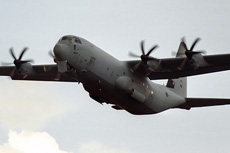
|
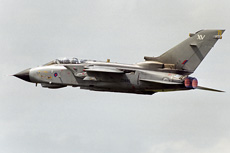
|
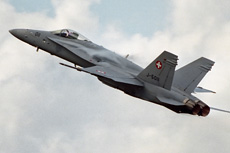
|
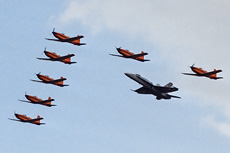
|
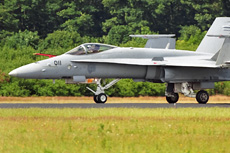
|
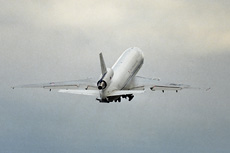
|
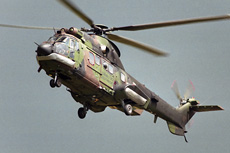
|
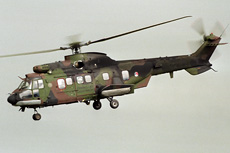
|
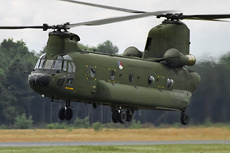
|
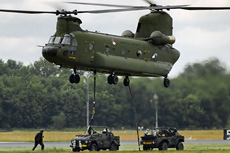
|
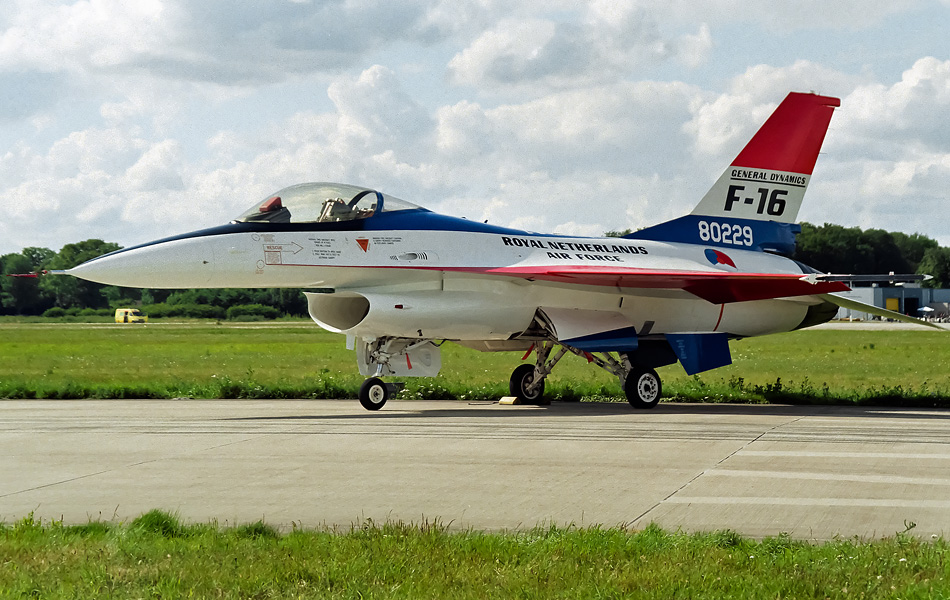
|
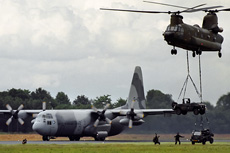
|
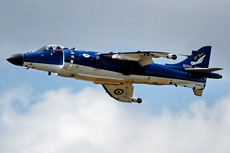
|
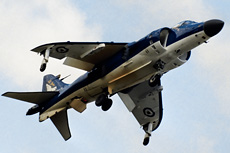
|
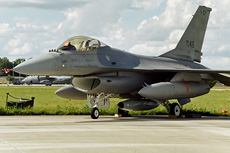
|
|
|

|







